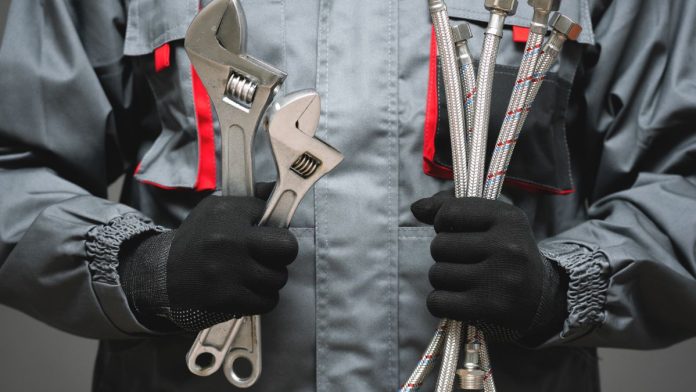As adorable as our feline friends are, they do present us with the not so lovable task of dealing with their waste. For many cat owners, the default method of disposal is flushing litter down the toilet, but what you might not realize is that this seemingly convenient option can have significant consequences.
In this comprehensive guide, we’ll explore why you should think twice before you flush, the health and environmental risks of improper disposal, and what responsible alternatives are available to pet owners.
The Health and Environmental Risks of Flushing Cat Waste
The convenience of flushing cat litter down the toilet is undeniable, but it comes with a hidden cost. Cat feces often contain a parasite called Toxoplasma gondii, which can survive standard water treatment processes and end up in our waterways, eventually reaching the ocean. This can lead to the infection of marine life and potentially pose health risks to humans, especially pregnant women and those with compromised immune systems.
Pollution Concerns
Unlike human waste, pet waste has no place in the sewage system designed for human sanitation. Cat waste introduces a cocktail of harmful bacteria, viruses, and parasites that can pollute water sources and terrestrial environments when not appropriately treated or disposed of.
Health Hazards
The presence of Toxoplasma gondii in our waters can pose health risks not only to us but also to marine animals, particularly sea otters, which are highly susceptible to the parasite. For cat owners living near the coastline, flushing cat waste could contribute to a chain of infection leading to detrimental effects on marine life.
Biodegradable Litter Options
One way to mitigate the risks of flushing cat waste is by using biodegradable litter. These litters are designed to break down naturally, typically made from materials such as wood, paper, or plant-derived substances. They are an eco-friendly alternative that offers a middle ground between convenience and consideration for the environment.
Clay Versus Biodegradable Litter
Traditional clay-based cat litters might be the go-to choice for many cat owners, but they do not break down in water and can clump together to create blockages in your plumbing. Biodegradable litters, on the other hand, don’t pose these risks and can often be composted or disposed of more safely.
Benefits of Biodegradable Litter
By opting for biodegradable litter, cat owners can significantly reduce their environmental impact. These litters break down over time, often with the efficiency of regular compost. They also have the added benefit of releasing less dust and thus reduce airborne pollutants in your home.
Composting Cat Waste
Composting cat waste comes with specific guidelines and can be done safely, but it requires a higher degree of commitment and knowledge from the pet owner. Composting cat waste not only provides an eco-friendly solution to disposal but also creates nutrient-rich soil for non-edible plants.
How to Compost Cat Waste
Composting cat waste involves using a separate composting bin that is not part of your regular garden compost. You should use specific compostable cat litter made from materials that will break down and heat the waste to a temperature that kills harmful pathogens.
Safety Considerations
Composting cat waste should not be done haphazardly. Always follow safety guidelines and consider your local regulations regarding this alternative. It may not be feasible for all cat owners, but for those willing to commit, it can be an excellent way to minimize their carbon footprint.
Municipal Regulations on Waste Disposal
It’s essential to be aware of and comply with local regulations regarding the disposal of cat waste. Many municipalities have specific guidelines in place due to the environmental and health risks associated with pet waste.
Local Waste Management Guidelines
Each city or region may have its own set of rules when it comes to disposing of cat waste. Some areas may prohibit flushing cat litter down the toilet altogether, while others may offer specific disposal methods for pet waste. It’s crucial to know and follow these rules to avoid fines and contribute to a healthier environment.
Informing Pet Owners
Municipal guidelines on pet waste disposal should be part of public awareness campaigns. Many pet owners simply do what they believe is convenient without understanding the environmental impacts. Education is key in informing pet owners of their responsibility to the broader ecosystem.
Educational Tips for Responsible Pet Ownership
Understanding the full life cycle of cat waste disposal is important for every pet owner. By implementing a few simple practices, you can significantly reduce your environmental footprint and contribute to keeping our water systems safe and pollution-free.
Proper Waste Management Practices
Pet owners should be encouraged to adopt proper waste management practices, including the use of biodegradable litters, regular scooping of the litter box, and responsible disposal methods. These practices not only protect our environment but also serve as examples for others in the community.
Impact on Water Systems
It’s critical to highlight the direct impact of flushing cat waste on local water systems. Education campaigns can illustrate the dangers it poses to marine life, water quality, and, ultimately, to our health. By spreading awareness, pet owners can make informed decisions that lead to a healthier planet.
Choosing Environmental Foresight
While flushing cat waste down the toilet seems like a benign daily task, the environmental consequences of this choice are more severe than many realize. By exploring and adopting alternative disposal methods, such as biodegradable litter and responsible composting, pet owners can make a positive impact on the health of our oceans and terrestrial environments.
In a world where each small action has broad, ripple-effect consequences, even the disposal of pet waste deserves our thoughtful consideration. Remember, the choices we make today can leave a lasting imprint on the world we pass on to future generations. With a little extra effort, we can ensure that our pets’ legacies are ones that honor and protect the environment they share with us. If your toilet becomes clogged, and your unable to unclog it, call your local Hamilton Plumbers at Rescue Rooter.









